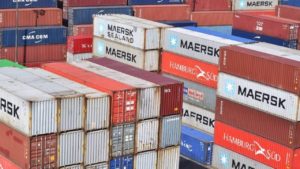
So Many Containers – Yet Equipment Availability Remains a Problem
3-minute read
There is no doubt container carriers are reaping record profits at the expense of cargo owners.
International maritime analysts Drewry recently stated that “ocean carriers have generated about US$190 billion of annual profits and about US$130 billion of fresh cash in 2021, obtained mainly by charging higher prices”.
Nonetheless, it is fair to say that there are also some additional areas of expenses they have to deal with, such as spiralling charter costs and high prices for second-hand container vessels (even older vessels that may otherwise have been heading for the scrapyard).
The third area of expense which perhaps is less obvious, is the substantial investment carriers have to put into their container equipment fleets.
Ocean carriers need more equipment because boxes are slower going through the supply chain since COVID struck and therefore are slower getting back onboard vessels.
Even if they do get loaded, they may be stuck off ports waiting for a berth (e.g. Long Beach for 40 days) and are consequently out of the supply chain for that length of time.
Unfortunately for shippers, that means they are also slower getting back to areas of demand, where exporters are waiting to fill them. So the carriers need much larger equipment fleets to accommodate the amount of cargo they are now carrying across the oceans.
Consequently, the equipment investment levels now being recorded are hitting record levels.
According to Drewry, a record 7.2 million TEUs were added to the global container equipment fleet last year, taking the total pool to 50.5 million TEUs – an increase of 14%.
Carriers can afford to invest at record levels because they are flush with cash from charging high freight rates.

It wasn’t just shipping lines investing; it was forwarders, logistics companies and big cargo owners themselves in some cases, such as Ikea.
Drewry noted that container lessors controlled 51.5% of the pool last year, down from 52% in 2020, but expects their share to fall to 49% by next year as ocean carriers and other transport operators take a majority share.
Overseas, freight forwarders are increasingly turning to shipper-owned containers (SOCs) to minimise the risk associated with port congestion and potential penalties whenever possible.
A study by Container xChange, a digital platform for equipment management, found that the amount of the top 50 forwarders accepting SOC requests had risen from 6% in 2019 to 18% in 2021, a three-fold increase.
So great is the demand, ageing boxes that would probably have been sold for scrap are still being kept in the fleet. This suggests that when the world returns to normal and supply chains clear, there will be a lot heading for the knacker’s yard.
Even with these record equipment inventories, the availability of boxes remains tight across the globe.
Newbuild costs have soared. The cost of a new 40ft high-cube container has increased by 35% since the start of the pandemic to around US$6250.
It also means that the prices paid to obtain second-hand boxes has hit record levels.
Old boxes often redeployed as storage units at the end of their maritime life cycle have almost doubled in price in the past two years.
The maritime publication Loadstar suggested 15-year-old 40ft units were commanding more than US$4000 on resale at the peak of demand in 2021.
Container xChange data suggests there is now a softening in the market for second-hand equipment, with its index showing average values for 20ft and 40ft boxes have declined by around 10% since November.
However, a meaningful drop will only happen when the overhang of demand dissipates, as COVID disruptions finally ease.
In the meantime, equipment availability will remain a problem for exporters and importers, with little sign of improvement in 2022.
One forwarder has written to the New Zealand Shipping Gazette to say that getting export container space from this country to the world is becoming tighter and tighter, with some bookings with shipping lines being cancelled at the 11th hour.
He commented that “smaller exporters appear to be getting the blunt end of the stick”.
The irony is that there has never been so many containers in the worldwide equipment pool – the problem is they are all stuck in the supply chain pipeline.
Source: The New Zealand Shipping Gazette
P.S. Easy Freight Ltd helps New Zealand importers & exporters to save money on international freight and reduce mistakes by guiding how to comply with Customs and biosecurity rules.
➔ Contact us now to learn how we can assist you.
